Planning worship?
Check out our sister site, ZeteoSearch.org,
for 20+ additional resources related to your search.
- |
User Links
Person Results
George S. Schuler
1882 - 1973 Topics: Missions and Evangelism Composer of "SCHULER" in The Hymnal for Worship and Celebration
George S. Schuler
George F. Root
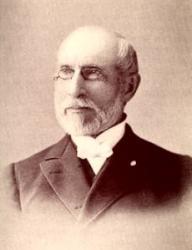
1820 - 1895 Topics: Missions and Evangelism Composer of "CHILDREN" in The Hymnal for Worship and Celebration Root, George F., MUS. DOC, born in Sheffield, Berkshire County, Mass., Aug. 30, 1820. He is much more widely known as a composer of popular music than as a hymn writer. Four of his hymns are in I. D. Sankey's Sacred Songs & Solos, 1878. Nos. 16, 100, 293, and 297. A sympathetic biographical sketch, with portrait, is in The Tonic Sol-Fa Reporter, Sep. 1886. He died Aug. 6, 1895.
--John Julian, Dictionary of Hymnology, Appendix, Part II (1907)
=====================
George Frederick Root was born in Sheffield, Mass., August 30, 1820. His father moved to North Reading, near Boston, when the boy was six years old, and there his youth was spent.
He was always fond of music— not singing at all as a boy, but played upon every kind of instrument that came in his way. At thirteen it was his pride that he could "play a tune" on as many instruments as he was years old. His dream of life was to be a musician, although such an ambition was looked down upon by all his relatives and friends, excepting a fond mother. In the fall of 1838 he went to Boston and made an engagement to work for Mr. A. N. Johnson and take lessons on the piano.
His father and one of the brothers were at the time in South America, and the mother, with six younger children, was at home on the farm. When he secured the engagement with Mr. Johnson to receive three dollars a week and board and lessons, the neighbors became interested and encouraged him to go ahead, they promising to help look after the farm and see that the family got along. The young man's happiness over these events can better be imagined than described.
On the second day of October, 1838, he entered upon his duties in his new heaven on earth located at Harmony Hall, Mr. Johnson's music-room, in Boston. His duties were to see to the fires, care for the room, answer callers, give information about Mr. Johnson when he was out, and practice his lessons when not otherwise engaged. He worked industriously and made steady progress. It was but a few weeks till Mr. Johnson had him playing for the prayer-meeting, and but a few more till he began turning over pupils to him. In about seven weeks' time Mr. Johnson encouraged him by a considerable increase of salary. A most important event to him was meeting Dr. Lowell Mason and being accepted as a bass singer in the celebrated Bowdoin Street choir. Also, on Mr. Johnson's recommendation, he began taking private voice lessons of Mr. Geo. Jas. Webb, the then celebrated voice teacher of Boston. He continued at least a year with Mr. Webb.
His first real singing class was taught the following fall, 1839, at the North End. It lasted nearly through the winter, and on the closing night his class made him a present of a silver goblet, suitably engraved, which he kept among his treasures.
Before the first year was up Mr. Johnson proposed a five year partnership, by which Mr. Root was to receive one-third of their earnings, and the former was to have the privilege of visiting Germany part of the time if he chose. They then changed their quarters to three rooms in the basement of Park Street Church. The annual rental was six hundred dollars. They were kept quite busy.
At this time Dr. Mason's music teaching in the public schools was a growing success, and Messrs. Johnson and Root were employed to assist him. Drs. Mason and Webb had introduced what is now called Musical Conventions a year or two previous to this. They called them "The Teachers' Class." Teachers and singers were called to Boston from surrounding territory to study and practice pretty much as they do now at normals.
In 1841 Mr. Root became one of the teachers in this class. He taught vocal training and continued this work for years afterward in Dr. Mason's teachers' classes, and later incorporated the same method in his own normals. During this year Mr. Johnson went to Germany, and left the two large church choirs (Winter Street and Park Street) in charge of Mr. Root. One of the organs was played by a pupil — Mr. S. A. Bancroft.
Everything went smoothly during Mr. Johnson's absence as it did also after his return. During the last year of the five-year partnership, Mr. Root was called to take the organ at Bowdoin Street, Mr. Mason changing to Winter Street. An amicable settlement was made between Messrs. Johnson and Root, and the partnership dissolved.
In 1811, Mr. Jacob Abbott (father of Lyman Abbott)and his three brothers had established a young ladies' school in New York City. They wanted a music teacher, and offered the position to Mr. Root. They also secured him the organ and choir of the Mercer Street Church, with prospects for other good work. It required pretty strong persuasive arguments to tempt Mr. Root to leave Boston, he was doing well there, and as the sequel shows, there was an attraction in Boston that held him in too tight a grasp to be relinquished by the mere offer of greater power and place. He made up his mind, however, only after getting the consent of the powders of Boston to take with him this [to him] the greatest attraction of the city — Miss Mary Olive Woodman — an accomplished lady, a sweet singer, and a member of a prominent family of musicians. He went to New York first to prepare a home, and in August, 1845, returned for his bride, who took her place in his New York choir as leading soprano, and through his long and eventful career she was ever at his side, a true helpmeet.
He was soon employed at Rutger's Female Institute, Miss Haines' School for Young Ladies, Union Theological Seminary and the New York State Institution for the Blind. Within six weeks after he arrived in New York his time was fully occupied. He continued with Mr. Abbott's young ladies' school ten years.
While teaching in New York he continued his summer work with Messrs. Mason and Webb in Teachers' Classes. Up to the year 1849 he had written but little music; only a few hymn tunes while in Boston. He needed more music for the young ladies of his schools, so he made his first book, The Young Ladies' Choir, of which he had enough copies made for his own use, as he had no thought of offering it to the public. Then in connection with Mr. J. E. Sweetser, they compiled the Root and Sweetser's Collection.
Mr. Root did work enough for two men, hence broke down in health. Mr. Abbott suggested that he take a trip to Paris. After weighing the matter carefully, in December, 1853, he sailed, and in due time arrived at Paris, where he began studying French, voice culture and piano under celebrated teachers. After spending nearly a year abroad, he returned home in improved health and ready for active work. He began to feel the need of new music for his classes, and after some thought decided upon a musical play ; the subject and title, The Flower Queen.
At the Institution for the Blind was a young lady, a former pupil, but now a teacher who had shown some poetical talent. He asked her to help him with the words. He would suggest in prose what the flowers might say and she would put it into rhyme. She did it so well that it seldom needed any alteration. This lady was the now famous Fanny Crosby. The cantata became very popular. About this time Mr. Root wrote a half dozen simple songs for the people. They all sold pretty well, but Hazel Dell and Rosalie, the Prairie Flower, became the most popular, and had a large sale.
It was in the summer of 1853 that the first real normal was held. Mr. Root originated it, and held it in New York. The principal teachers were Messrs. Mason, Root, Hastings, and Bradbury. This school became famous. Sessions were also held at North Reading, Mass., a village near Mr. Root's "Willow Farm Home," with Dr. Mason, Mr. Webb, Mr. Bradbury and himself as principal teachers.
About this time Mr. Root decided to give up his work in New York, and devote himself entirely to conventions, normal work and authorship. He was eminently successful. Among the most eminent teachers and composers of our country have been students in Dr. Geo. F. Root's Normal Musical Institute.
In 1860 Dr. Root settled in Chicago and entered the music publishing business with his brother E. T. Root, and C. M. Cady, as "Root & Cady," Mr. Root's reputation being the most important capital of the firm. His books and popular songs soon made the new firm prosperous. Then came the war with its horror. Dr. Root wielded his musical sword in the way of writing war songs, which made him famous. The Battle Cry of Freedom, Just Before the Battle, Mother, and others, made thousands of dollars for the music house.
In the great Chicago fire of 1871 the interests of the firm of Root & Cady became engulfed in the general ruin. Their loss was upward of a quarter of a million dollars. They then sold their book catalogue, plates and copyrights to John Church & Co., of Cincinnati, and the sheet music plates and copyrights to S. Brainard's Sons, Cleveland. These sales realized about §130,000. The final result was that Dr. Root, his talented son F. W., and others became connected with John Church & Co. Under this new business relationship Mr. Root went right on with his normal and convention work; also issued a great many new books and cantatas. In 1872 the Chicago University very worthily conferred upon him the degree Doctor of Music.
In 1886 he made a trip to Scotland and England, and arranged with publishers to issue some of his cantatas. He was royally received.
Dr. Root was the author of about seventy-five books, nearly two hundred songs in sheet form, and many popular gospel songs. Dr. Root occupies a prominent place in the musical history of this country. It was Dr. Mason who lifted music from almost nothing and gave it an impetus, but he left no better follower than Dr. Root to carry on his work. He was a man of spotless integrity and high Christian character, and to know him was to love him.
At the time of Dr. Root's death he was at Bailey Island, Maine, a summer resort, where he and other relatives had cottages. On August 6, 1895, he was seized with neuralgia of the heart — and died within one hour. He was buried at North Reading, Mass., his old home.
--Hall, J. H. (c1914). Biographies of Gospel Song and Hymn Writers. New York: Fleming H. Revell Company.
George F. Root
George Askins
? - 1816 Person Name: George Atkins, 19th Century Topics: Missions and Evangelism Author of "Brethren, We Have Met to Worship" in Rejoice Hymns George Askins was born in Ireland. He immigrated to the United States as an adult. He was a Methodist and became an itinerant preacher for the Baltimore Conference in 1801. He was appointed to other circuits as well, mostly in Maryland, Virginia, and Kentucky. He died in Frederick, Maryland 28 February 1816.
Dianne Shapiro from The Makers of the Sacred Harp by David Warren Steel with Richard H. Hulan, University of Illinois Press, 2010
George Askins
Gustav Holst
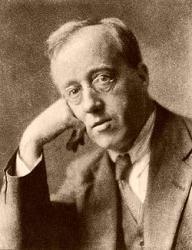
1874 - 1934 Person Name: Gustav Holst, 1874-1934 Topics: Mission and Evangelism Arranger of "THEODORIC " in Singing the Faith Gustav Holst (b. Chelteham, Gloucestershire, England, September 21, 1874, d. London, England, May 25, 1934) was a renowned British composer and musician. Having studied at Cheltenham Grammar School, he soon obtained a professional position as an organist, and later as choirmaster. In 1892, Holst composed a two-act operetta, which so impressed his father that he borrowed the money to send Holst to the Royal College of Music. Severe neuritis in his right hand later caused him to give up the keyboard, and Holst turned to the trombone and composing. In 1895 Holst met Ralph Vaughan Williams, and the two became lifelong friends. Vaughan Williams helped Holst land his first job as a singing teacher. Holst became very interested in Indian and Hindu culture, and composed a number of operas translated from Sanksrit myths. These were not received well in England, however. Holst is best known for his composition, The Planets, as well as
Gustav Holst
Albert Midlane
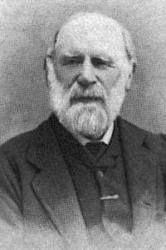
1825 - 1909 Person Name: Albert Midlane, 1825-1909 Topics: Evangelism; The Kingdom; The Kingdom of God on Earth Missions and World Fellowship Author of "Revive thy work, O Lord" in The Hymnal Midlane, Albert, was born at Newport, Isle of Wight, Jan. 23, 1825, and was engaged in business in that town for many years. To his Sunday school teacher he ascribes the honour of prompting him to poetic efforts: and the same teacher did much to shape his early life. His first printed hymn, "Hark! in the presence of our God," was written in September, 1842, at Carisbrooke Castle, and printed in the Youth’s Magazine in November of the same year. Since then he has written over 300, and of these a large proportion are in common use. They appeared in magazines and small mission hymn-books, including:—
(1) The Youth's Magazine; (2) The British Messenger; (3) The London Messenger; (4) Trotter's Evangelical Hymn Book, 1860; (5) The Ambassador's Hymn Book, 1861; (6) Second edition of the same, 1868; (7)Hymn Book for Youth; (8) Good News for the Little Ones, 1860; (9) William Carter's Gospel Hymn Book, 1862; and several other works of a similar kind.
In addition to several small works in prose, Mr. Midlane has gathered his verse together from time to time and published it as:—
(1) Poetry addressed to Sabbath School Teachers, 1844; (2) Vecta Garland, 1850; (3) Leaves from Olivet, 1864; (4) Gospel Echoes, 1865; (5) Above the Bright Blue Sky, 1867; (6) Early Lispings, 1880.
Of the hymns contained in these works nearly 200 have been in common use from 1861 to 1887, the most popular being "There's a Friend for little children." The hymn-books, however, in which many of them are found are usually very small, are used in what are commonly known as Gospel Missions, and have gradually given way to other and more important collections. We therefore append only those hymns which are at the present time in use in official or quasi-official hymn-books, or such collections as have a wide circulation. Those hymns which are omitted from the following list may be found in the works given above, and especially in the Gospel Echoes. The bracketed dates below are those of the composition of the hymns.
i. Given in Trotter's Evangelical Hymn Book, 1860.
1. How sweet the cheering words. (Aug. 1860.) The Gospel.
2. Lord Jesus, save! (July 1860.) Lent.
ii. Given in The Ambassador's Hymn Book, 1861.
3. Angels rejoice o'er sinners saved. (Aug. 1860.) Joy in Heaven over Repenting Sinners.
4. Come to the royal feast. (Aug. 1860.) The Gospel Feast.
5. Father, bless the heavenly message. (Aug. 1860.) Divine blessing implored.
6. How vast, how full, how free. (Aug. 1860.) Divine Mercy.
7. I am not told to labour. (June 25, 1860.) Salvation by Faith.
8. Jesus died upon the tree. (Aug. 13, 1860.) Good Friday.
9. Lord, prepare the hearts of sinners. (Aug. 28, 1861.) Preparation of the heart.
10. Not all the gold of all the world. Peace through Jesus.
11. Now we'll render to the Saviour. (Sept. 1, 1861.) Praise for Salvation.
12. O what a gift the Father gave. (Aug. 22, 1860.) The Gift of The Son.
13. O what a Saviour is Jesus the Lord. (Aug. 29, 1861.) Jesus the Saviour.
14. Passing onward, quickly passing. (Sept. 10, 1861.) Prepared?
15. Salvation, Lord, is Thine. (Aug., 1860.) Salvation through Jesus.
16. Sinner, where is room for doubting? (Sept., 1861.) Expostulation.
17. Soft the voice of mercy sounded. Grace.
18. The perfect righteousness of God. (Sept. 21, 1861.) God our Righteousness.
19. There is a throne of grace. (Sept. 14, 1860.) The Throne of Grace.
20. We speak of the mercy of God. (Sept. 19, 1861.) Divine Mercy.
iii. Given in W. Carter's Gospel Hymn Book, 1863.
21. Can any say, I do believe ? (Aug., 1860.) Assurance in Christ.
22. If Jesus came to seek and save. (Oct., 1861.) Salvation in Jesus.
iv. Given in Leaves from Olivet, 1864.
23. See the blessed Saviour dying. (Oct. 5, 1860.) Good Friday.
24. Sweet the theme of Jesus' love. (April 22, 1862.) The Love of Jesus.
v. Given in Gospel Echoes, 1865.
25. Come and welcome to the Saviour. (June 8, 1862) Invitation.
26. God be gracious to a sinner. (May 21, 1861.) Lent.
27. God speaks from heaven; in love He speaks. (July, 1860.) Love and Mercy of God.
28. Hark! the cry, Behold He cometh. (June 8, 1862.) Advent.
29. He saves because He will. (April 20, 1862.) The "I Wills" of Jesus.
30. How solemn are the words. (Aug. 1, 1865.) The New Birth.
31. Himself He could not save. (Sept. 1861.) Good Friday.
32. I once was bound in Satan's chains. Pardon.
33. Jesus lived. He lived for sinners. (Jan. 4, 1862.) Easter.
34. Jesus never answered "Nay." (May 13, 1862.) Jesus always the same.
35. Jesus the blessed centre is. (June 8, 1862). Father glorified in the Son.
36. Jesus, the risen Saviour. (July 31, 1862.) Easter.
37. Jesus, the soul that trusts in Thee. (May 7, 1864.) Salvation through Jesus.
38. Look, poor sinner, look to Calvary. Good Friday.
39. Lord, when I think upon the love. (Oct. 1, 1860.) The Love of Jesus.
40. Peace with God ! How great a treasure (Oct. 18, 1861.) Peace.
41. Salvation! What a precious word. (Nov. 22, 1861.) Salvation.
42. Scripture says Where sin abounded. (March 3, 1862.) Abounding Grace.
43. Shall Jesus' love be spoken? (May 4, 1862.) Love of Jesus.
44. The Lamb was slain, the blood was brought. (Aug. 24,1862.) The Passover.
45. The silver trumpets sounding. (May 7, 1862.) The Year of Jubilee.
46. There is a rest for weary souls. (Dec. 4, 1863.) Rest. Peace in Jesus.
47. 'Tis the voice of mercy calls thee. (Nov. 5, 1861.) Mercy.
48. When the Saviour said "'Tis finished" (Oct. 1861.) Good Friday.
49. When God begins His gracious work. (Dec. 27, 1860.) God Unchangeable.
50. Who can praise the blessed God ? (Oct. 1861.) Praise for Salvation.
51. Why those fears, poor trembling sinner. Safety in Jesus.
vi. Given in the Ambassador's Hymn Book, 2nd ed., 1868.
52. Life from the dead, eternal life. (Oct. 11, 1867.) Work of the Holy Spirit.
53. Stern justice cries for blood. (March 2, 1867.) The Atonement.
vii. Various.
54. Apart from every worldly care. (June 1866.) Prayer Meetings. Written for Spurgeon's Our Own Hymn Book 1866.
55. Be not weary, toiling Christian. (Feb. 1857.) Encouragement. In the British Messenger, Sept. 1857.
56. Eighteen hundred years ago. (Aug. 1859.) Fulness of Time. In the London Messenger, April, 1861.
57. Father, for Thy promised blessing. (Feb. 20, 1860.) Outpouring of the Spirit desired. In The Revival, July, 1860.
58. God bless our Sunday School. Sunday School Anniversary. First printed in the Baptist Children's Magazine, July, 1844. It has passed into numerous collections for children, but usually st. ii. is omitted, thus reducing it to 3 st.
59. He comes! He comes! the Bridegroom comes. (Sept. 9, 1850.) Advent. In The Present Testimony, 1851.
60. Kept by the power of God. (May 6 ,1858.) Security in God. In the London Messenger, Sept., 1860.
61. Let the waves of blessing roll. (Jan. 6, 1868.) Missions. In the Enlarged London Hymn Book, 1873.
62. Lord, 'our waiting spirits bow. (June, 1866.) Prayer Meetings. Written for Spurgeon's Our Own Hymn Book 1866.
63. Love us freely, blessed Jesus. (July 2, 1858.) Lent. In the Churchman's Penny Magazine. Oct., 1858.
64. Never perish! words of mercy. Mercy in Christ. Printed in the monthly Girdle, June, 1857, and in the British Messenger, Aug. 1857, in 4 double st. In the collections it is reduced to the first two stanzas.
65. No separation, O my soul. (May 6, 1863.) Perseverance. In the British Herald, Aug., 1863.
66. Nought but the voice of God can speak. (Jan. 29, 1863.) All things are of God. In the 1873 Appendix to Snepp's Songs of Grace & Glory.
67. Now, O joy, my sins are pardoned. Pardon and Peace. (Nov. 9, 1860). Printed in the London Messenger, March, 1861, then in the Gospel Echoes, 1865; and then in several hymn-books. The original began, "Once I sang, but not in earnest." Usually st. ii., iii., of 8 l, are given as "Now, O joy, &c."
68. O art thou an heir of glory? (June 4, 1861.) Cautions. In Hymn Book for Youth, 1862.
69. O what a glorious truth is this. (Aug. 3, 1860.) Jesus Died. In the London Messenger, Sept., 1860.
70. Once it was mine, the cup of wrath. (Aug. 8, 1860.) Wrath and Pardon. In the London Messenger, Oct., 1861.
71. Onward, upward, heavenward. (Feb. 7, 1860.) Pressing Onward. In the London Messenger, March, 186l.
72. Perennial spring of pure delight. (March 17, 1864.) Jesus All in All. In the London Messenger, Jan., 1865.
73. Sheltered by the [Thy] sprinkled blood. (Sept. 23, 1863.) Safety in Jesus. In the London Messenger, Feb. 1864.
74. Showers of blessing, gracious promise. (April 19, 1862.) Missions. In the London Messenger, Aug., 1862, and Leaves from Olivet, 1864.
75. The Church of God, amazing, precious thought. (July 6, 1857.) The Church. In The Present Testimony, 1858, and Leaves from Olivet, 1864.
76. The whispers of Thy love divine. (May 3, 1868.) Love of God. In the Island Greeting, Oct., 1872.
77. Though billows round me roll. (April 2, 1853.) Trust. In Food for Christ's Flock, 1853.
78. 'Tis finished, cried the dying Lamb. (Feb. 21, 1850.) Good Friday. In the Baptist Children's Magazine, 1850).
79. Tis heaven where Jesus is. (Oct. 23, 1862.) Joy and Peace in Jesus. In the Enlarged London Hymn Book, 1873.
80. Together all things work for good. (Aug. 14, 1860.) All work for Good. In the Enlarged London Hymn Book, 1813.
81. Waiting for Jesus, and loving while waiting. (Jan. 9, 1872.) Second Advent desired. In the 1873 Appendix to Snepp's Songs of Grace & Glory.
82. Without a cloud between. (Mar. 18,1862.) Jesus, Face to Face. In the London Messenger, June, 1862.
83. Yet awhile; how sweet the thought. (Dec, 1864.) Second Advent desired. In theLondon Messenger, 1865.
The collections in which these hymns are mainly found are Spurgeon's Our Own Hymn Book, 1866; Snepp's Songs of Grace & Glory, 1872-3; Hurditch's Enlarged London Hymn Book, 1873, and smaller books for Evangelical mission work. Of Mr. Midlane's hymns as a whole, Miher's estimate that "His hymns are full of spiritual thought, careful in their wording, and often very pleasing without reaching the highest form of poetical excellence " (Singers and Songs, p. 572), is just. A marked feature of these hymns is the constant and happy use of Scripture phraseology.
--John Julian, Dictionary of Hymnology (1907)
========================
Midlane, A., p. 733, ii. Mr. Midlane published in 1901 The Bright Blue Sky Hymn Book, of 315 of his hymns, and the same year The Gospel Hall Hymn Book, for use in the Gospel Hall, Newport, I.W., with 218 additional, making 533 original compositions. A broad-sheet of seven special hymns for Jewish children, in connection with the Mildmay Mission to the Jews, was also issued in December, 1904. Other publications previously noticed give, with these, over 800 hymns to Mr. Midlane as his contribution to the hymnody of the Church.
--John Julian, Dictionary of Hymnology, New Supplement (1907)
Albert Midlane
James Mountain

1844 - 1933 Topics: Missions and Evangelism Composer of "WYE VALLEY (abridged)" in The Hymnal for Worship and Celebration Rv James Mountain United Kingdom 1844-1933. Born at Leeds, Yorkshire, England, he attended Gainford Academy, Rotherham College, Nottingham Institute, and Cheshunt College. He became pastor at Great Marlow, Buckinghamshire. Leaving the clerical field due to ill health, he conducted evangelistic campaigns in Britain (1874-82) and worldwide (1882-1889). An author, he wrote a number of books. He published a hymn book, “Hymns of consecration and faith”,and “Sacred songs for missions, prayer, and praise meetings” (1876). He died at Tunbridge Wells, Kent, England.
John Perry
James Mountain
Avis B. Christiansen
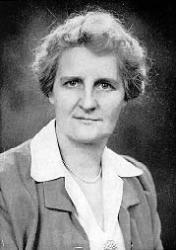
1895 - 1985 Topics: Missions and Evangelism Author of "Only One Life" in The Hymnal for Worship and Celebration Avis Marguerite Burgeson was born in 1895 and lived in Chicago all her life. She attended the Moody Church, pastored for many years by Dr. Harry Ironside. In 1917, Avis Burgeson married Ernest Christiansen who later became a vice president of Moody Bible Institute. She was a modest and retiring woman, and sometimes used pen names: Avis Burgesson, Christian B. Anson and Constance B. Reid. She began writing poems in childhood, and before her death in 1985 had written thousands of them. She died in 1985.
NN, Hymnary
Avis B. Christiansen
Ron Hamilton

1950 - 2023 Person Name: Ron Hamilton, 1950- Topics: Missions and Evangelism Author of "Faithful Men" in Rejoice Hymns In honor and memory of Ron ("Patch the Pirate") Hamilton (1950-2023), the American Christian musician, lyricist, composer, and president and owner of Majesty Music, who passed away last week on April 19, the posts this week will be about him.
After finishing high school, in 1969 Ron went on to Bob Jones University (BJU) in Greenville, SC, where he received a BA in Church Music in 1973, followed by an MA in Church Music Composition. While at BJU Ron met Shelly Garlock at vesper choir, directed by her father, Dr. Frank Garlock; it was "love at first sight" and six years later, on May 31, 1975, they were married. They have five children: Jonathan, Tara, Alyssa, Megan, and Jason. Immediately, they began working at Majesty Music, a Christian music publishing house founded by Dr. Garlock. (Sources: Patch the Pirate Facebook page, Wikipedia)
One of Ron Hamilton's songs that depicts well his life is "Faithful Men":
I am looking to Jesus, giving all in the race,
Pressing upward to gain the heavenly prize.
Faithful men are my witness, who have struggled and died;
And they watch from the grandstand in the skies.
(Refrain)
Faithful men have gone before us,
Faithful men who fight and stand;
I want to follow in their footsteps,
Guided by those faithful men.
Jacob joined with the faithful;
Joseph followed behind;
Moses ran with the mighty men of old.
There were David and Daniel; then came Peter and Paul.
Now they chant as they run on streets of gold.
Refrain
(Majesty Hymns, p. 380)
--from an obituary on the Facebook group "Hymns and Hymnwriters"
Ron Hamilton
B. B. McKinney
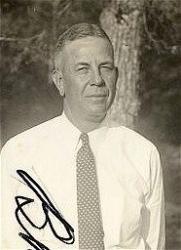
1886 - 1952 Topics: Missions and Evangelism Author of "Wherever He Leads, I'll Go" in The Hymnal for Worship and Celebration Pseudonyms--
Martha Annis (his mother’s maiden name was Martha Annis Heflin)
Otto Nellen
Gene Routh (his wife’s maiden name was Leila Irene Routh)
-----
Son of James Calvin McKinney and Martha Annis Heflin McKinney, B . B. attended Mount Lebanon Academy, Louisiana; Louisiana College, Pineville, Louisiana; the Southwestern Baptist Seminary in Fort Worth, Texas; the Siegel-Myers Correspondence School of Music, Chicago, Illinois (BM.1922); and the Bush Conservatory of Music, Chicago. Oklahoma Baptist University awarded him an honorary MusD degree in 1942.
McKinney served as music editor at the Robert H. Coleman company in Dallas, Texas (1918–35). In 1919, after several months in the army, McKinney returned to Fort Worth, where Isham E. Reynolds asked him to join the faculty of the School of Sacred Music at Southwestern Baptist Theological Seminary. He taught at the seminary until 1932, then pastored in at the Travis Avenue Baptist Church in Fort Worth (1931–35). In 1935, McKinney became music editor for the Baptist Sunday School Board in Nashville, Tennessee.
McKinney wrote words and music for about 150 songs, and music for 115 more.
--© Cyber Hymnal™ (www.hymntime.com/tch)
B. B. McKinney
Robert F. Douglas
Topics: Missions and Evangelism Composer (choral ending) of "AZMON" in The Hymnal for Worship and Celebration Pseudonym. See also Fettke, Tom
Robert F. Douglas


 My Starred Hymns
My Starred Hymns


